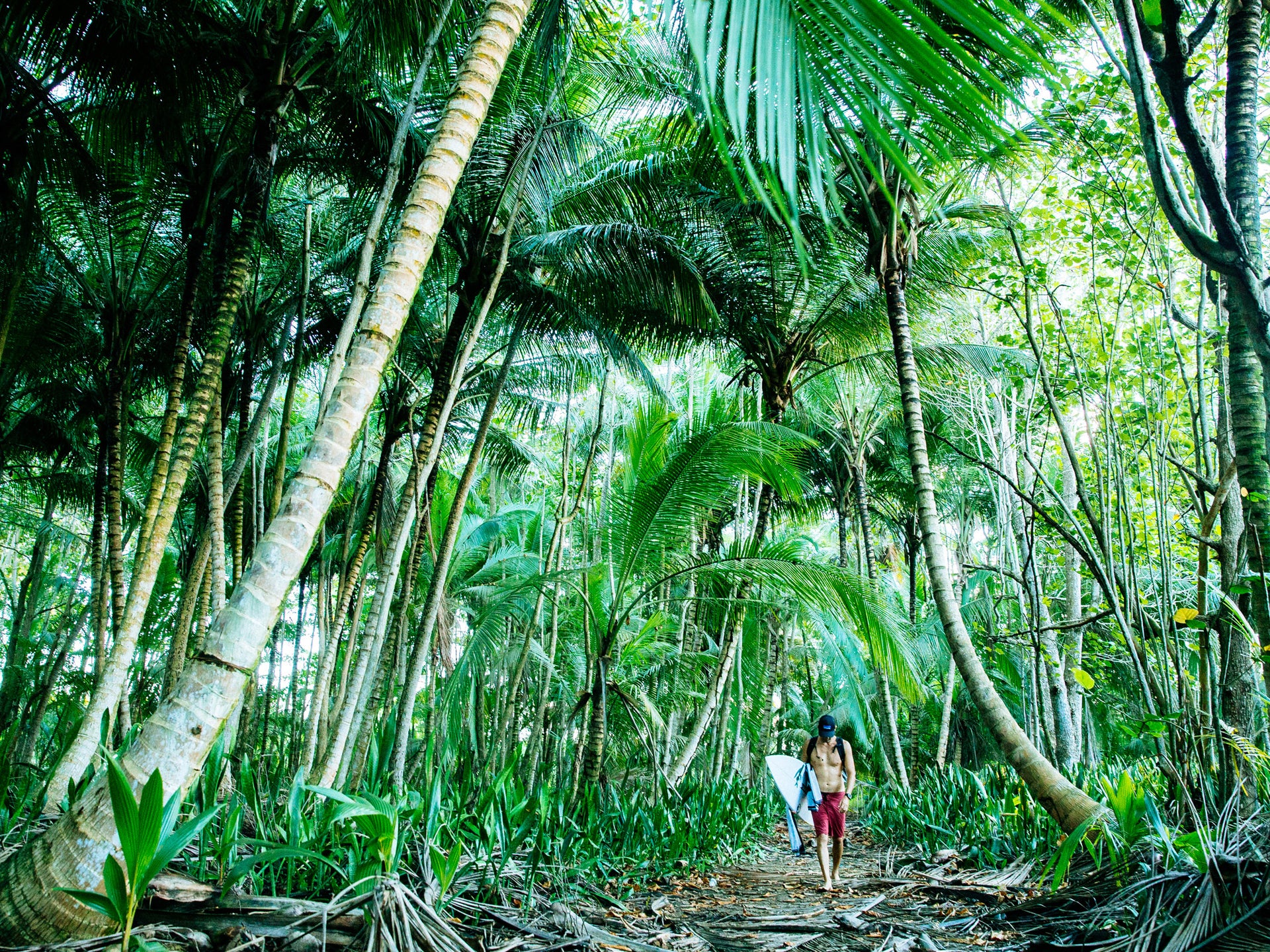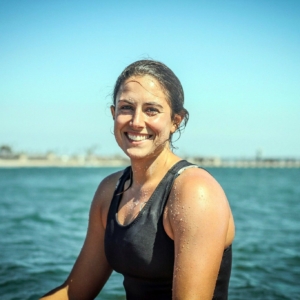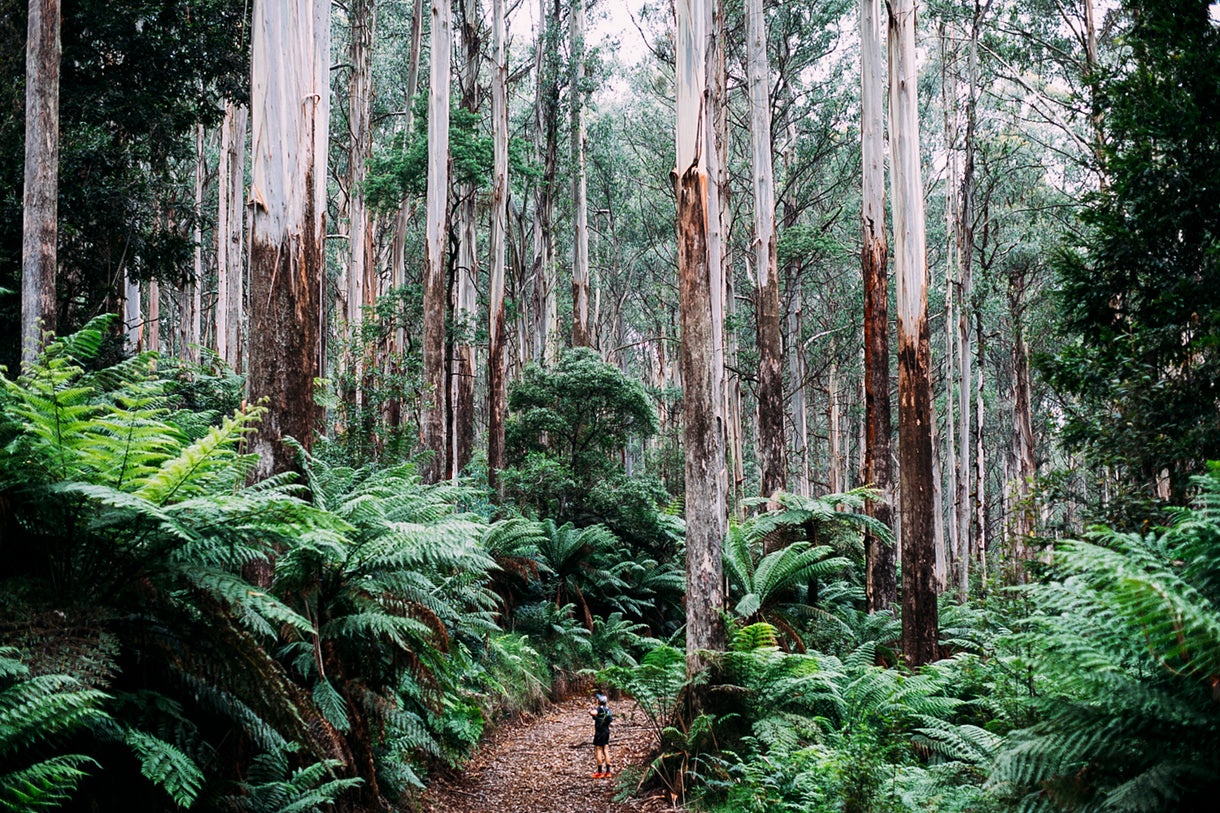In the town of Isabela, in the northwest corner of Puerto Rico, there is a winding boardwalk that spans several miles of undeveloped coastline. On the north side of the path is the ocean, boasting quality reef breaks, some hidden from view by sweeping sand dunes. Across from one of those spots, there used to be a thriving mangrove forest. Today, hundreds of leafless mangroves lay bare and tangled, their bark a lifeless grey. The scene resembles the aftermath of a wildfire, but the opposite happened—after Hurricane Maria, the old boardwalk stymied the natural drainage of the forest. The mangroves drowned.
Maria made landfall in Puerto Rico in September 2017 as a high-end category 4 hurricane with 155 mph winds. The average household went approximately 41 days without cell phone service, 68 days without water and 84 days without electricity. Some people did not have power for almost a year. After the storm, the Puerto Rican government said that only 64 people had died. A Harvard study later estimated the number to be closer to 4,600, due to the long-term lack of medical services, electricity, food and clean water.
“After Maria, there was no one cleaning up,” Veronica Nieves, 36, project coordinator for the environmental group Conservación Costera (CoCo), told me as we surveyed the destroyed mangroves with CoCo cofounder Bernice Baker, 36, and Patagonia Surf Ambassador Otto Flores this past March. She was referring to the widely criticised inaction by the Puerto Rican and federal governments (Puerto Rico is a commonwealth of the United States—which to many Puerto Ricans is a misnomer for “colony”—they are US citizens, however, they do not vote for president) after the storm. Baker and her partner, Héctor Varela, founded CoCo in response, to educate the community on how to protect and restore the natural environment themselves.
“Maria showed us it’s about community self-management,” Nieves said.
Today, that self-management is in full swing. CoCo is working to restore the mangrove forest. They’re also erecting signs along the boardwalk that inform passersby about the beaches, the wildlife that live there and how to steward the natural resources. The signs call the 3.5-square-mile area that the path traverses La Reserva Natural Comunitaria Mabodamaca, or The Mabodamaca Community Natural Reserve.
 CoCo project coordinator Veronica Nieves plants red mangrove seedlings as part of the restoration process in La Reserva Natural Comunitaria Mabodamaca. Photo: Diego Nieves Berríos
CoCo project coordinator Veronica Nieves plants red mangrove seedlings as part of the restoration process in La Reserva Natural Comunitaria Mabodamaca. Photo: Diego Nieves Berríos
In truth, this land does not have an official reserve designation status from the government. Calling it one is an act of resistance, meant to impose pressure on the government to protect the land. Baker and Nieves fear that without formal protection, the area will eventually fall victim to development.
Just before Hurricane Maria, developers and wealthy investors were rapidly buying land and slating it for tourism infrastructure and high-end housing, often in violation of minimally enforced zoning regulations and environmental protections. Then the storm came, halting most projects. Now, there are signs all over the archipelago that development is ramping up again, threatening natural spaces like the Mabodamaca Reserve. But these projects are facing an ignited public who, neglected after Maria, have little tolerance for environmental degradation, government corruption and outside influence.
“The hurricane was a reset for the whole island,” Flores told me. He spent much of the year after the storm coordinating clean water relief with Waves for Water. “There’s an awakening from el pueblo, or the people.”
Flores grew up in San Juan, Puerto Rico’s capital. When he was 12, professional surfer Jorge Nido drove him across the island to Wishing Well, a shallow righthand barreling wave about 10 miles west of La Reserva. “There were emerald-green, offshore, perfect rights for as long as I could see,” Flores said. “It was shocking to me that I lived in a place where the waves that I dreamed of were a drive away.”
For almost as long as Flores has been surfing those waves, many of them have been one construction permit away from destruction. Just before Maria, Flores joined protests opposing the Christopher Columbus Landing Resort, a massive proposed development on the land in front of a number of world-class breaks, including Wishing Well. The wide, grassy valley where the resort would be built is called Playuela. Locals come there to camp, ride horses and fly kites. The reef is frequented by green and hawksbill sea turtles and three species of coral on the endangered species list.
Kathy Hall, a surfer and environmentalist with a master’s degree in biological oceanography, has been fighting the Columbus project since it was first proposed in 1993. Flores and I visited her at her hilltop home in Isabela. “It was going to use up every inch of that land,” she said. Early proposals for the resort included a 17,000-square-foot casino, 23,000 square-meter artificial lake, 300-room hotel, hundreds of condos and a shopping centre. Hall said that sediment from construction, oil runoff from cars, chemicals on lawns and potentially faulty septic tanks are just a few of the ways the project would put the environment and wildlife at risk.
Hall showed us a scrapbook she keeps with court documents and news clippings from various past battles the community has waged against the resort. Many of the articles quote Flores. As his platform grew over the years, he used it to speak out against the project to any news outlet that would listen. The pages were browned and wrinkled from water damage. Hurricane Maria destroyed Hall’s house, which she had to rebuild.
In the mid-’90s, the environmental group that Hall cofounded, La Liga Ecológica del Noroeste, won several battles against the developers, but the Environmental Quality Board still accepted the development’s environmental impact study with only minor changes. When La Liga lost a final court case, Hall was devastated, but the efforts were not in vain. The years of community uproar scared off investors, and the project was shelved.
Around 2016, the land’s newest owner tried to start construction based on the original permits. La Liga Ecológica resumed their fight in court, arguing that a new environmental impact study must be conducted. Hall said the battle could reach Puerto Rico’s Supreme Court. I asked her what she hopes is done with the land. “It is so iconic to have a place on the coast like that,” she said. “I like it just the way it is.”
Gerardo Lebrón Laboy is a lawyer who has assisted in past disputes against the resort. “The storm slowed development,” he said, “but any day now they could turn on the machines.”
 Flores slips into something more casual at Punta Borinquen, Aguadilla, which in 2019 was protected as a World Surfing Reserve by the Save the Waves Foundation. Photo: Ryan ‘Chachi’ Craig
Flores slips into something more casual at Punta Borinquen, Aguadilla, which in 2019 was protected as a World Surfing Reserve by the Save the Waves Foundation. Photo: Ryan ‘Chachi’ Craig
Lebrón Laboy isn’t waiting for a court decision to protect the coastline. He, Flores and other advocates are calling for the town of Aguadilla, where Playuela is located, to pass an ordinance that would legally protect the town’s surf breaks—the first law of its kind in Puerto Rico. The ordinance would mandate “effective and comfortable access to the wave,” prohibit “any obstacle that would affect the breaking of the wave” and prohibit any activity that would “damage the underwater topography.”
If the ordinance passes, Flores hopes it could serve as a blueprint for other local municipalities to protect their own surf breaks and, therefore, the coastlines. The ordinance would not ban new construction, but the restrictions would be stringent enough that no mega-hotel could possibly comply with them.
Mega-hotels, however, aren’t the only danger to Puerto Rico’s waves. Before Hurricane Maria, the Puerto Rican government was $72 billion in debt. The crisis prompted the government to rigorously court outside investment by offering generous tax exemptions for newcomers, primarily those from the United States, who move to Puerto Rico. These tax exemptions, along with the rise of remote work during the pandemic, has resulted in a large number of non-Puerto Ricans moving to the archipelago, driving up real-estate prices.
About 10 miles south of Aguadilla along the west coast is Rincón, Puerto Rico’s best-known surf town that’s home to its famous big-wave break, Tres Palmas. Tres Palmas’ waters are protected as a marine reserve, and by Puerto Rican law, all beaches are public. But about 20 acres of pasture-like land in front of the shoreline is up for grabs. A wealthy Puerto Rican family is selling it in subdivided lots, two of which are already under contract. Steve Tamar, vice chair of the Surfrider Foundation’s Rincón chapter, said that a large construction project would cause unavoidable sediment runoff. “The death of the reef is pretty much guaranteed.”
Some locals hope that an NGO will purchase the land for conservation and co-manage it with the community. But the lots are believed to cost around $1 million each—an unaffordable price for any local land trust.
With few options to stop the sale, the community is doing what it can to make its feelings known. A strip of land running through the property is technically owned by the public—the government bought it to make a bike path that was never built. Residents hired surveyors to help them precisely determine the path’s location, which they have demarcated with a fence lined with Puerto Rican flags. “The people reclaimed it,” said Tamar. Locals now have a walkway to access the beach, and they’ve sent a clear message to anyone thinking of building a beachfront mansion there.
Dr. Miguel Canals Silander, a professor of ocean science and engineering at the University of Puerto Rico, was one of the residents who led the bike path effort. He was encouraged when, last year, the Rincón community managed to stop a condominium complex from constructing a beachfront pool. The situation reached a boiling point when a video surfaced of a disoriented sea turtle trying to lay eggs in the construction site. A widespread uproar halted the effort, and in February a court ordered the condominium complex to demolish the construction within 120 days. (As of July, the condominium owners had still not removed the construction, and on July 4, a group of protestors tore down parts of a cement wall themselves, resulting in the arrest of a protestor).
“The success really empowered Puerto Ricans throughout the island to raise awareness that beaches are public and that environmental and zoning laws must be respected,” Canals Silander said. “Before, people might have been afraid to fight incorrect development, but now everybody is fired up and knows they can win.”
Of course, Puerto Ricans aren’t completely aligned about what should happen to spaces like Tres Palmas and Playuela. Some hope that more tourism and outside investment will lift Puerto Rico out of economic crisis. Others worry that all the activist attention on these areas will only attract more construction.
When we visited the mangrove forest, I asked Baker and Nieves how much development was too much. It depended on how it was done, they said. Tourism could empower the community, or it could displace it. It was late afternoon and the path was starting to fill with joggers and families riding bicycles.
“Progress,” Baker said, “does not have to come attached with concrete.”
For further information about preserving green spaces on Puerto Rico’s coastline and how to contribute head to Conservación Costera and Surfrider Puerto Rico.


























































Gabriela Aoun is a writer, editor, producer and surfer based in Encinitas, California. Her work aims to empower and inspire people to protect and thrive in the natural world.